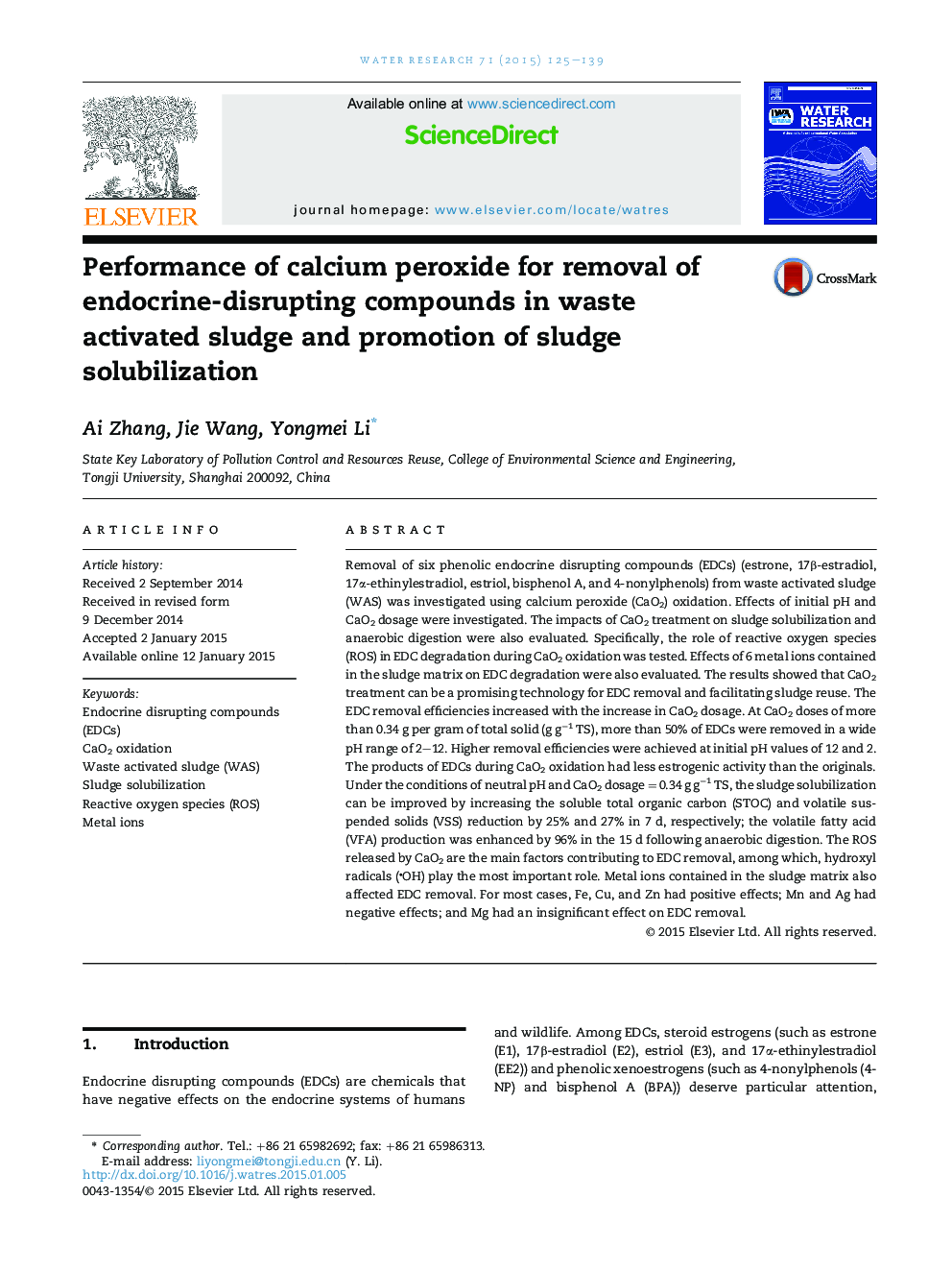| کد مقاله | کد نشریه | سال انتشار | مقاله انگلیسی | نسخه تمام متن |
|---|---|---|---|---|
| 4481173 | 1623097 | 2015 | 15 صفحه PDF | دانلود رایگان |
• CaO2 treatment can remove EDCs from WAS and reduce their estrogenic activity.
• CaO2 treatment is promising in improving sludge solubilization and VFA production.
• Suitable initial pH and CaO2 dose were recommended.
• The role of ROS released by CaO2 in EDC degradation was tested.
• Effects of 6 metal ions contained in WAS on EDC degradation were evaluated.
Removal of six phenolic endocrine disrupting compounds (EDCs) (estrone, 17β-estradiol, 17α-ethinylestradiol, estriol, bisphenol A, and 4-nonylphenols) from waste activated sludge (WAS) was investigated using calcium peroxide (CaO2) oxidation. Effects of initial pH and CaO2 dosage were investigated. The impacts of CaO2 treatment on sludge solubilization and anaerobic digestion were also evaluated. Specifically, the role of reactive oxygen species (ROS) in EDC degradation during CaO2 oxidation was tested. Effects of 6 metal ions contained in the sludge matrix on EDC degradation were also evaluated. The results showed that CaO2 treatment can be a promising technology for EDC removal and facilitating sludge reuse. The EDC removal efficiencies increased with the increase in CaO2 dosage. At CaO2 doses of more than 0.34 g per gram of total solid (g g−1 TS), more than 50% of EDCs were removed in a wide pH range of 2–12. Higher removal efficiencies were achieved at initial pH values of 12 and 2. The products of EDCs during CaO2 oxidation had less estrogenic activity than the originals. Under the conditions of neutral pH and CaO2 dosage = 0.34 g g−1 TS, the sludge solubilization can be improved by increasing the soluble total organic carbon (STOC) and volatile suspended solids (VSS) reduction by 25% and 27% in 7 d, respectively; the volatile fatty acid (VFA) production was enhanced by 96% in the 15 d following anaerobic digestion. The ROS released by CaO2 are the main factors contributing to EDC removal, among which, hydroxyl radicals (OH) play the most important role. Metal ions contained in the sludge matrix also affected EDC removal. For most cases, Fe, Cu, and Zn had positive effects; Mn and Ag had negative effects; and Mg had an insignificant effect on EDC removal.
Figure optionsDownload high-quality image (320 K)Download as PowerPoint slide
Journal: Water Research - Volume 71, 15 March 2015, Pages 125–139
